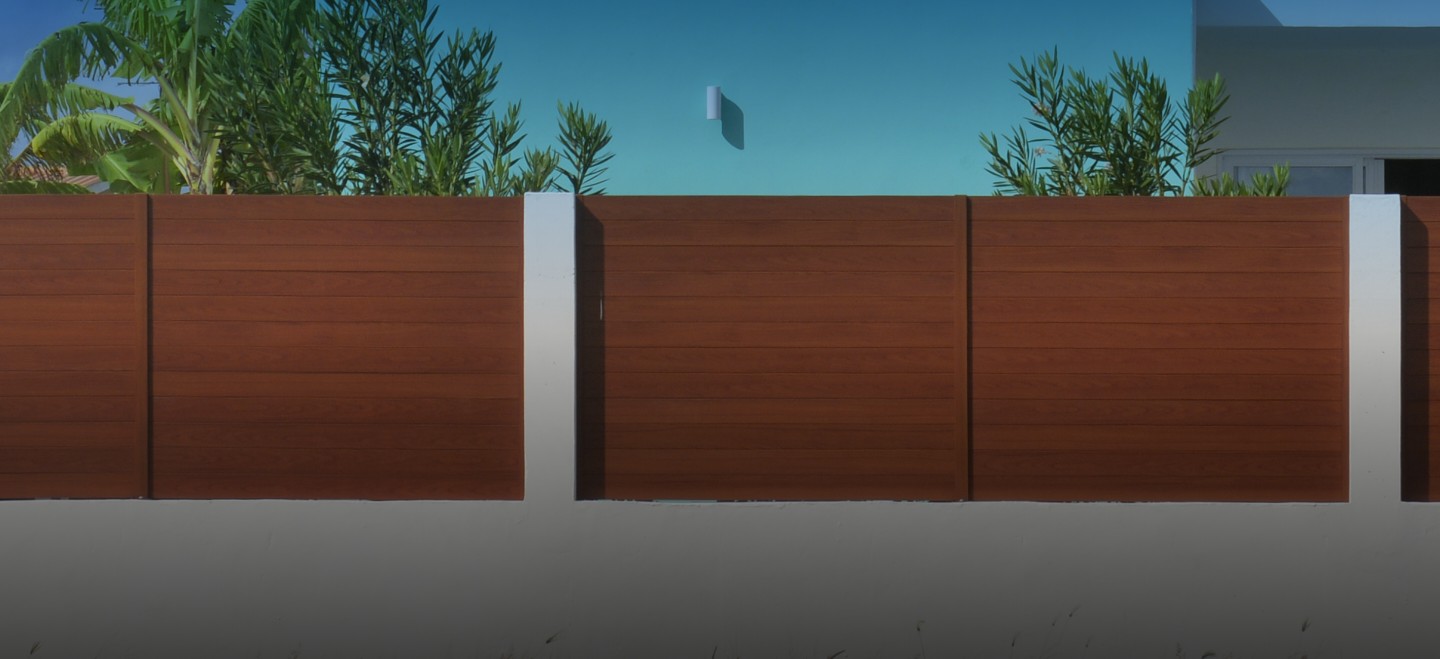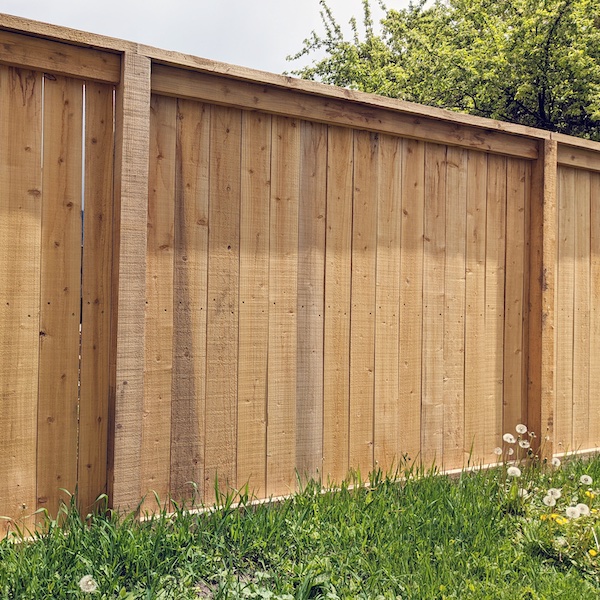All Categories
Featured
Whether it's solid winds, hefty rainfall, or extreme warm, weather condition can cause substantial damages to your fencing, leading to expensive repairs or even a complete replacement. Below are some functional tips to secure your fencing from weather-related damage.
Plastic Fence: Plastic is very durable and immune to dampness, decaying, and bending. It additionally calls for little maintenance and can stand up to harsh weather condition conditions without fading or breaking. Steel Secure fencing: Wrought iron or aluminum fences are resilient and strong against wind and rainfall. Nonetheless, they are vulnerable to corrosion with time otherwise correctly safeguarded. Applying a rust-resistant finishing can help maintain their appearance and integrity. Composite Secure Fencing: Made from a mix of timber fibers and plastic, composite fencings combine the most effective top qualities of both products. They're resistant to pest, degeneration, and rot damage while supplying the appearance of all-natural timber. By picking the ideal material, you can make certain that your fencing is better outfitted to hold up against the components.
Moisture Security: Sealers create a waterproof barrier, preventing rain from permeating right into the wood and creating rot or mold. UV Protection: Spots and sealants block UV rays, which can dry out and blemish the wood. Maintain Appearance: Routinely applying a safety coating will certainly preserve the fencing's all-natural appeal and avoid discoloration or fading. To guarantee resilient security, reapply sealer or discolor each to two years, depending on your climate and fence wear.
![]()
![]()
In addition, cleaning your fencing can help remove dust, mold, and debris that can trigger lasting damages. For wooden fencings, gently stress wash the surface area to remove crud, while vinyl fences can be cleaned with a mild detergent solution.
Conclusion. Your fencing is an important financial investment that offers visual, protection, and privacy attract your property. By taking aggressive steps to shield it from weather-related damage, you can guarantee its longevity and preserve its performance. Whether you're choosing the right materials, applying safety coatings, or reinforcing blog posts, these basic methods can assist protect your fence from the elements, conserving you money and expanding the life expectancy of your fence for years ahead. Regular evaluations and upkeep are key to capturing problems early, so be sure to remain on top of your fencing's treatment throughout the seasons.
- Select Weather-Resistant Products. One of the very first steps in shielding your fencing from weather-related damage is choosing the best material. Some products are naturally more resistant to the elements, lowering the requirement for consistent repair services. For example:
Plastic Fence: Plastic is very durable and immune to dampness, decaying, and bending. It additionally calls for little maintenance and can stand up to harsh weather condition conditions without fading or breaking. Steel Secure fencing: Wrought iron or aluminum fences are resilient and strong against wind and rainfall. Nonetheless, they are vulnerable to corrosion with time otherwise correctly safeguarded. Applying a rust-resistant finishing can help maintain their appearance and integrity. Composite Secure Fencing: Made from a mix of timber fibers and plastic, composite fencings combine the most effective top qualities of both products. They're resistant to pest, degeneration, and rot damage while supplying the appearance of all-natural timber. By picking the ideal material, you can make certain that your fencing is better outfitted to hold up against the components.
- Shield Wooden Fences with Discolorations and sealants. Wooden fences are especially at risk to wetness, UV rays, and extreme temperatures. Gradually, these aspects can bring about decomposing, bending, and fading. To secure your timber fence from these issues, applying a premium timber sealant or discolor is essential. Right here's exactly how this aids:
Moisture Security: Sealers create a waterproof barrier, preventing rain from permeating right into the wood and creating rot or mold. UV Protection: Spots and sealants block UV rays, which can dry out and blemish the wood. Maintain Appearance: Routinely applying a safety coating will certainly preserve the fencing's all-natural appeal and avoid discoloration or fading. To guarantee resilient security, reapply sealer or discolor each to two years, depending on your climate and fence wear.

- Strengthen the Fencing Posts. To prevent this, take into consideration reinforcing your fence messages by mounting concrete grounds or utilizing more powerful products for article anchors. If you live in a location with heavy winds or seasonal frost, this included stability will certainly assist safeguard your fencing from damages.
- Cut Surrounding Greenery. Tree branches and vines growing near or over your fence can trigger significant damages in rainy weather condition. Not only will this shield your fencing, however it will additionally enhance the total appearance of your lawn.
- Use Windbreaks. Wind is a major element in weather-related fencing damage. Solid gusts can compromise or also topple fencings, particularly if they're high or otherwise effectively enhanced. One way to reduce wind effect is by installing a windbreak. This can be as straightforward as planting hedges or trees near your fencing or establishing a mesh display. A windbreak works as a barrier that decreases the straight influence of wind on the fencing, stopping damage from high winds and gusts.

- Address Drain Issues. Poor water drainage is a major contributor to fence damages, specifically for wood fences. Water that builds up around the base of fencing articles can trigger them to rot over time. Make certain that the ground around your fencing has proper water drainage so water does not pool and trigger wear and tear. Setting up a French drainpipe or adding crushed rock around the base of the blog posts can help route water away from the fencing. This basic repair can make a substantial distinction in preventing moisture damages and preserving your fencing.
- Normal Examinations and Upkeep. Routine upkeep is important for protecting your fence from climate damages. Inspect your fencing regularly, particularly after serious weather condition events, to identify any type of indicators of damage.
In addition, cleaning your fencing can help remove dust, mold, and debris that can trigger lasting damages. For wooden fencings, gently stress wash the surface area to remove crud, while vinyl fences can be cleaned with a mild detergent solution.
- Use a Rust-Resistant Coating to Steel Fencings. Steel fencings, particularly those made from iron or steel, are vulnerable to rust when subjected to dampness and humidity. To protect your steel fencing from rust, use a rust-resistant finishing or paint. Make sure that the layer is made for outdoor usage and can endure the components. Sand them down and repaint the impacted locations to prevent additional corrosion. if you see any corrosion areas.
Conclusion. Your fencing is an important financial investment that offers visual, protection, and privacy attract your property. By taking aggressive steps to shield it from weather-related damage, you can guarantee its longevity and preserve its performance. Whether you're choosing the right materials, applying safety coatings, or reinforcing blog posts, these basic methods can assist protect your fence from the elements, conserving you money and expanding the life expectancy of your fence for years ahead. Regular evaluations and upkeep are key to capturing problems early, so be sure to remain on top of your fencing's treatment throughout the seasons.
Latest Posts
Recognizing Roof Warranties: What Homeowners Must Know
Published May 23, 25
1 min read
Explore Cut Costs on Car Maintenance with Montclare Auto Repair’s Exclusive Deals
Published May 21, 25
1 min read
Selecting the Right Roofing System Shade: Influence On Power Efficiency
Published May 19, 25
1 min read
More
Latest Posts
Recognizing Roof Warranties: What Homeowners Must Know
Published May 23, 25
1 min read
Explore Cut Costs on Car Maintenance with Montclare Auto Repair’s Exclusive Deals
Published May 21, 25
1 min read
Selecting the Right Roofing System Shade: Influence On Power Efficiency
Published May 19, 25
1 min read